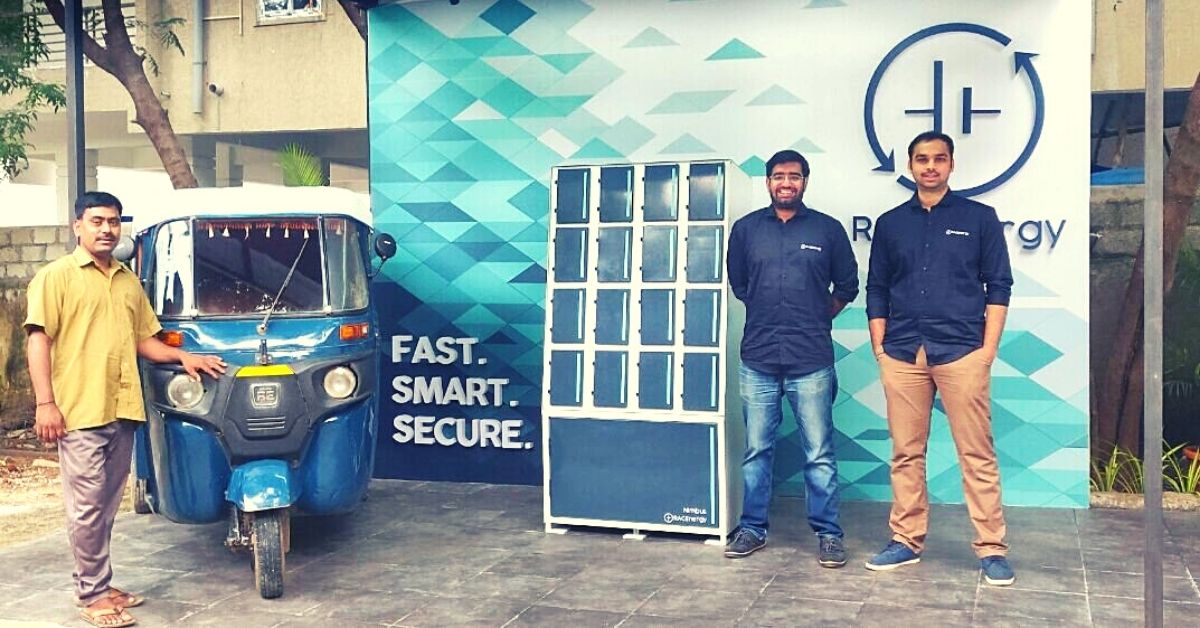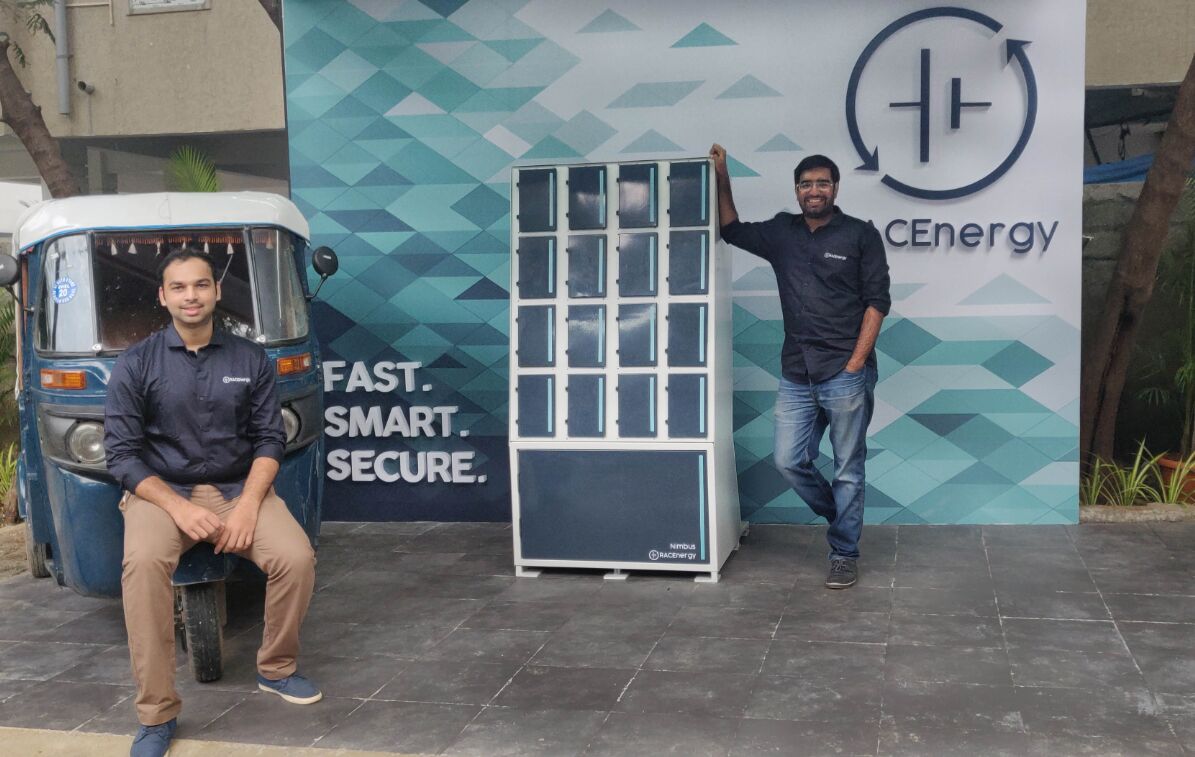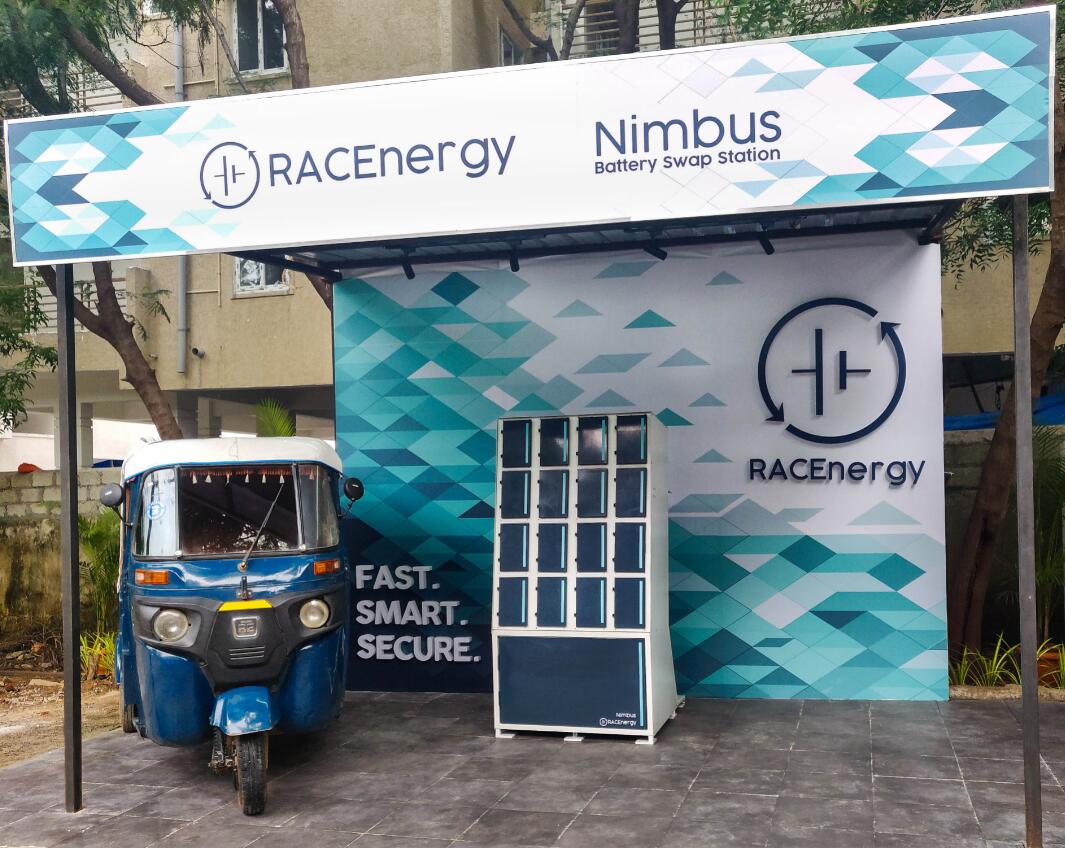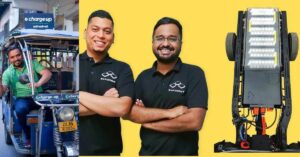For Just Rs 50k, This Hyderabad Startup Converts Auto Rickshaws Into Electrical Ones
RACEnergy, a Hyderabad-based startup, has developed a conversion kit that can be retrofitted into an existing diesel-powered three-wheeler and convert it into an electrical one, using a battery swapping model.

Imagine yourself riding in an electric auto-rickshaw without the noise and vibrations of the engine piercing through your ears. As a regular user of auto-rickshaws, that’s the experience I am looking for. Fortunately, RACEnergy, a Hyderabad-based electrical vehicle (EV) startup, is making kits for auto-rickshaws that would convert them into EVs.
RACEnergy spent over two years developing and testing this kit, which can be retrofitted into an existing IC engine powered three-wheeler. Having spoken to over 2,000 auto-rickshaw drivers in Hyderabad, the startup is on the cusp over delivering a product that can potentially improve the lives of both drivers and passengers.
“The conversion kit costs about Rs 50,000. It’s cheap because we operate this on a battery swapping model, which removes the battery out of the price of the vehicle. The driver who converts his vehicle into an EV doesn’t buy the battery upfront, and instead swaps it at a battery-swapping station whenever required and pays for the amount of energy used. Typically, an ICE autorickshaw costs about Rs 2 to Rs 2.5 lakh, depending on the model, and it barely takes one-fifth of the price to convert it. Meanwhile, an e-auto in the market costs about Rs 3.5 lakhs. Once converted, auto drivers, save anywhere between 40-50% of their running costs, depending on certain variables. The auto drivers recover their cost of buying the kit in about 12-15 months, and this tenure is calculated only based on the amount they save in operating expenditure,” says Arun Sreyas, CEO of RACEnergy.
The startup has set up one battery-swapping station in Hyderabad. In the next two or three months, another five such stations are expected to come up. In the past two months since these electric kits were finalised for purchase, they have received over 300 pre-orders. So far, they have converted 10 vehicles. The next few months will be spent fulfilling the pre-orders.
“In a battery swapping model, the battery is owned by the company performing the swapping, whereas the vehicle and retrofit kit is owned by the driver. They use our batteries as a service. The vehicle owner does not have to worry about managing batteries at all. For drivers, since there is no clutch or gearbox, they can cover greater distances at greater comfort and pick up more rides than they would have earlier,” Arun claims.
Basic specifications
On average, auto drivers typically drive about 10 to 12 hours a day depending on a host of factors. One of the benefits of battery swapping is that it takes only a minute or two to do. Otherwise, drivers often have to stand for hours in long queues to charge their lithium-ion batteries and risk losing customers.
With each battery swap, these electric three-wheelers obtain a range of 100 km, the average distance auto-rickshaw drivers cover in a given day, according to RACEnergy’s research. There are days when they travel anywhere between 80 km to 200+ km, but then again, if they want to swap the batteries, all they have to do is wait a minute or two.
“It’s going to be one of the most powerful powertrains you’ll see in the market for passenger three-wheelers in terms of performance specifications like motor power, torque, etc. We will announce these particular specifications in a couple of months when we organise our official launch. However, what we can reveal is that our autos will hit a top speed of 60 kmph,” claims Arun, speaking to The Better India.
Why battery swapping over charging stations?
Battery developers at RACEnergy believe that charging works better for private vehicles. They argue that in private vehicles, the day to day travel is less, and typically, the vehicle lies idle either in your house or office. At both points, charging points can be set up.
Swapping technology works much better for the commercial segment for two reasons, argues Arun. One, as auto-rickshaw drivers, they have to be on the road as much as possible. They can’t waste time charging their vehicles.
“Two, while conducting research, I visited around 200 homes where the families of auto drivers live. There is no way they can afford to charge their EV batteries at home. The wiring of their homes isn’t viable for charging vehicles. Charging these batteries at their home would be like running two-three ACs on a pucca house in low-income neighbourhoods. If we end up setting up charging stations in a city where there are about 1,00,000 auto-rickshaws, there won’t be enough space for these installations, not to mention the plethora of autos lined up at a particular station. Swapping makes sense for the auto-rickshaw driver because it’s cheap and they can get back to their business as quickly as possible with minimal investment. Paying for these swaps would be upto 50% cheaper than paying for petrol or diesel,” he says.
How does the swapping process work? Once the vehicle enters a RACEnergy swapping station, they conduct three layers of authentication wirelessly over Bluetooth. The moment a driver pulls up at the station, they have to submit a pin number, following which all the authentication systems commence. The station then gathers all the data about how much energy has been used and bills to the driver. Drivers can pay in cash or through a prepaid system, and the startup is linking payments to an RFID system as well.

Looking ahead
Currently, RACEnergy is working with a couple of OEMs in the three-wheeler space. The goal is to get these OEMs into using their batteries and swapping stations.
“They are excited about the battery swapping segment because their e-autos can be sold for much cheaper without the battery. In the long term, when swapping technology expands significantly, there will be two or three standards like in petrol, diesel and CNG auto-rickshaws today. Moving from petrol to diesel auto-rickshaw will require more changes to the engine, as well as heavy investment. But moving from one battery standard to the other would be very simple. I doubt interoperability will be a problem going forward. because it’s a simple solution and OEMs can stick to one battery-swapping platform or have variants on two or three platforms. I think it will be easier for OEMs to make these three-wheelers instead of petrol or diesel ones,” he says.
(Edited by Divya Sethu)
Like this story? Or have something to share? Write to us: [email protected], or connect with us on Facebook and Twitter.
This story made me
- 97
- 121
- 89
- 167
Tell Us More
We bring stories straight from the heart of India, to inspire millions and create a wave of impact. Our positive movement is growing bigger everyday, and we would love for you to join it.
Please contribute whatever you can, every little penny helps our team in bringing you more stories that support dreams and spread hope.



















